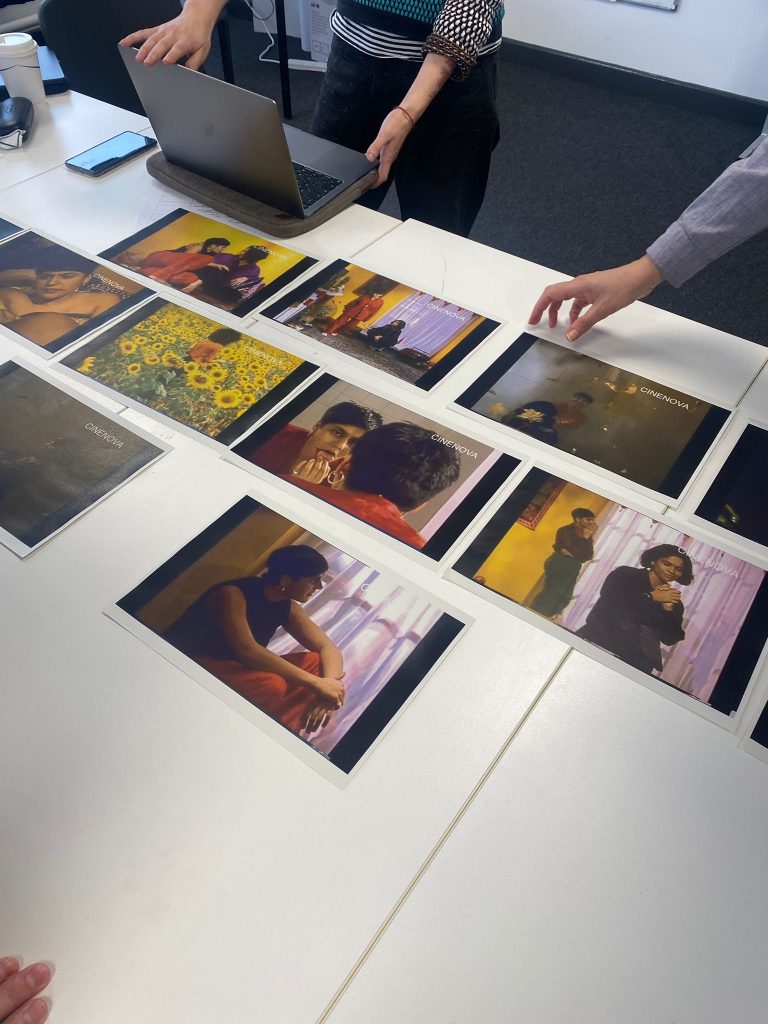
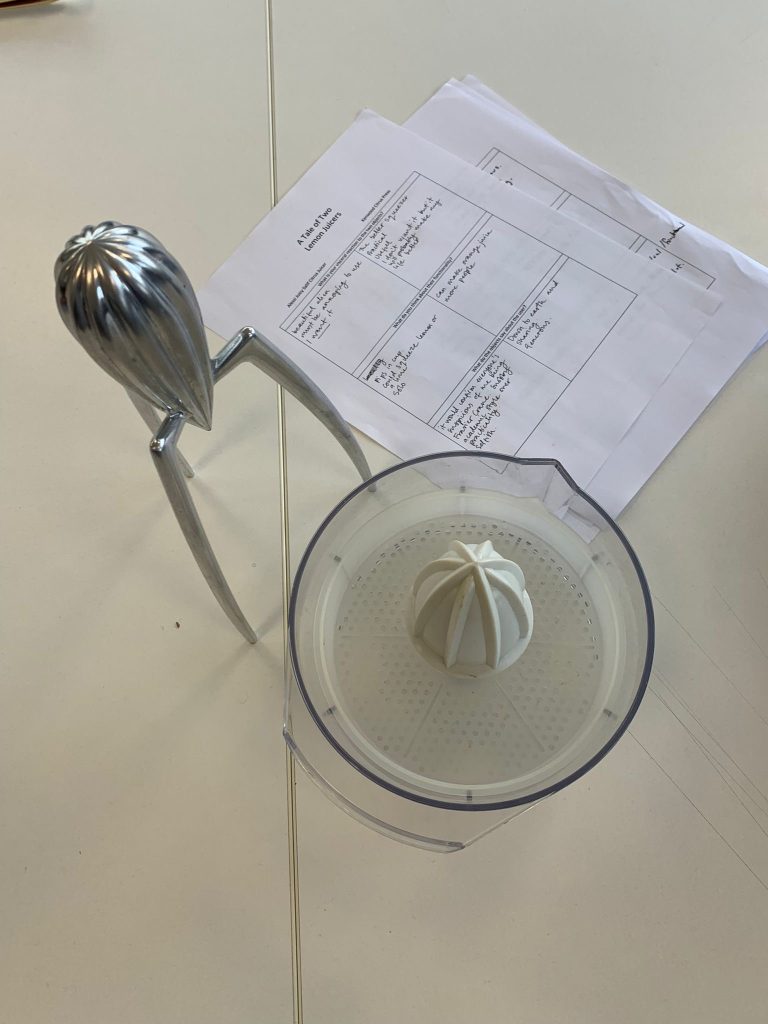
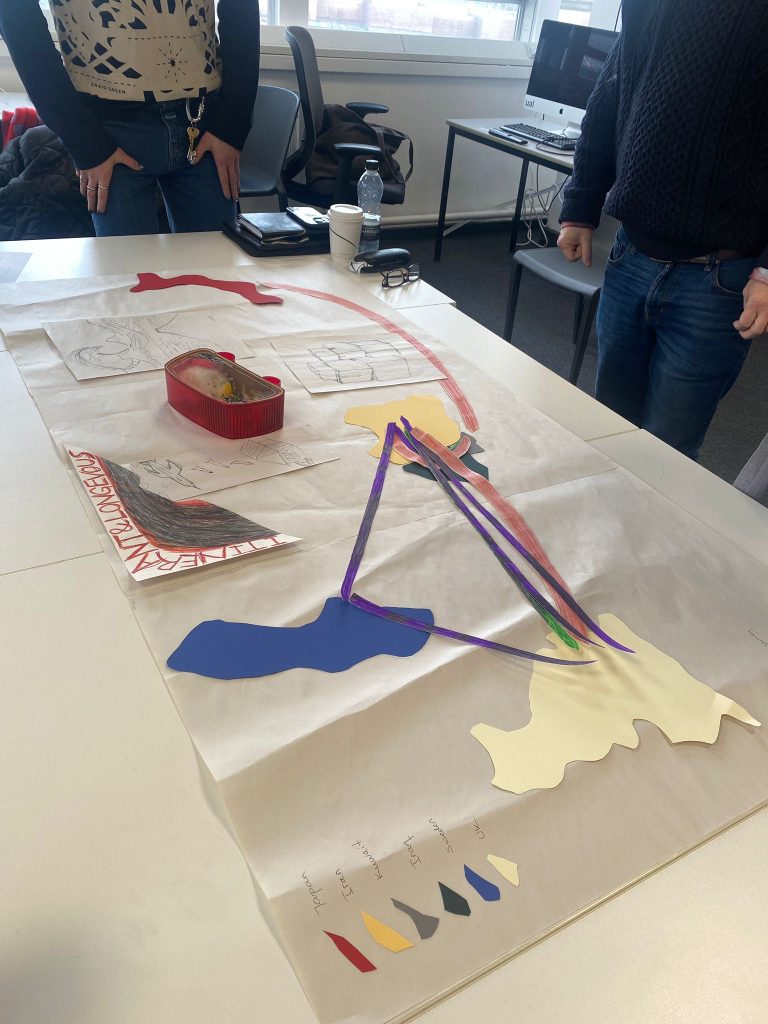

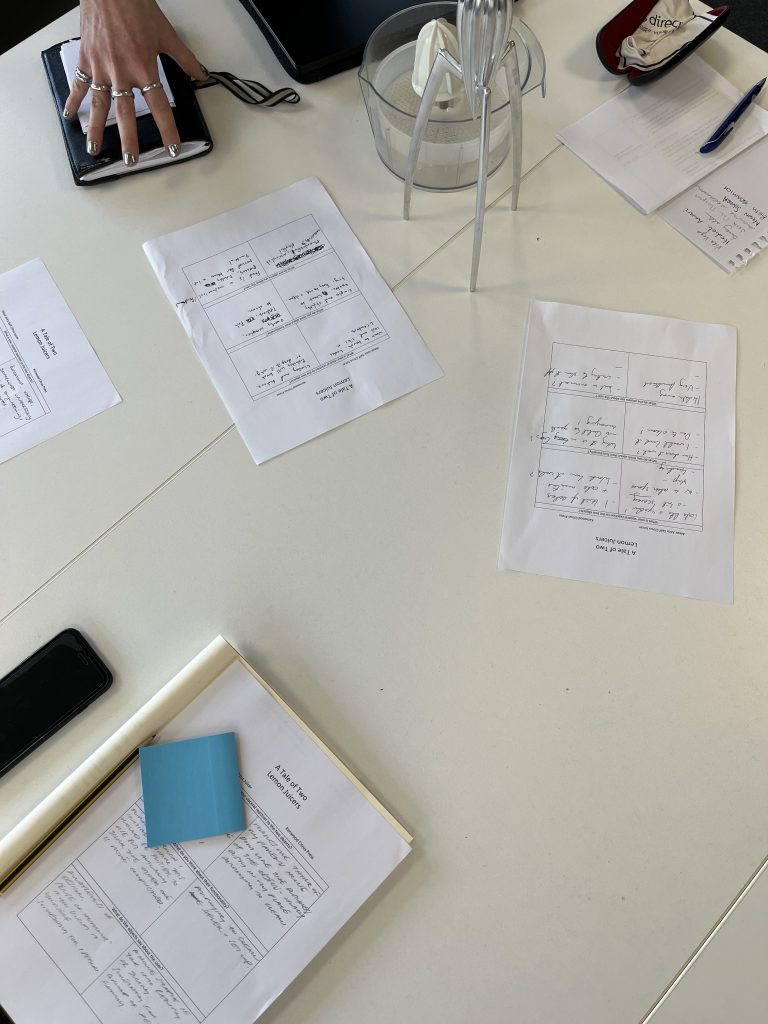

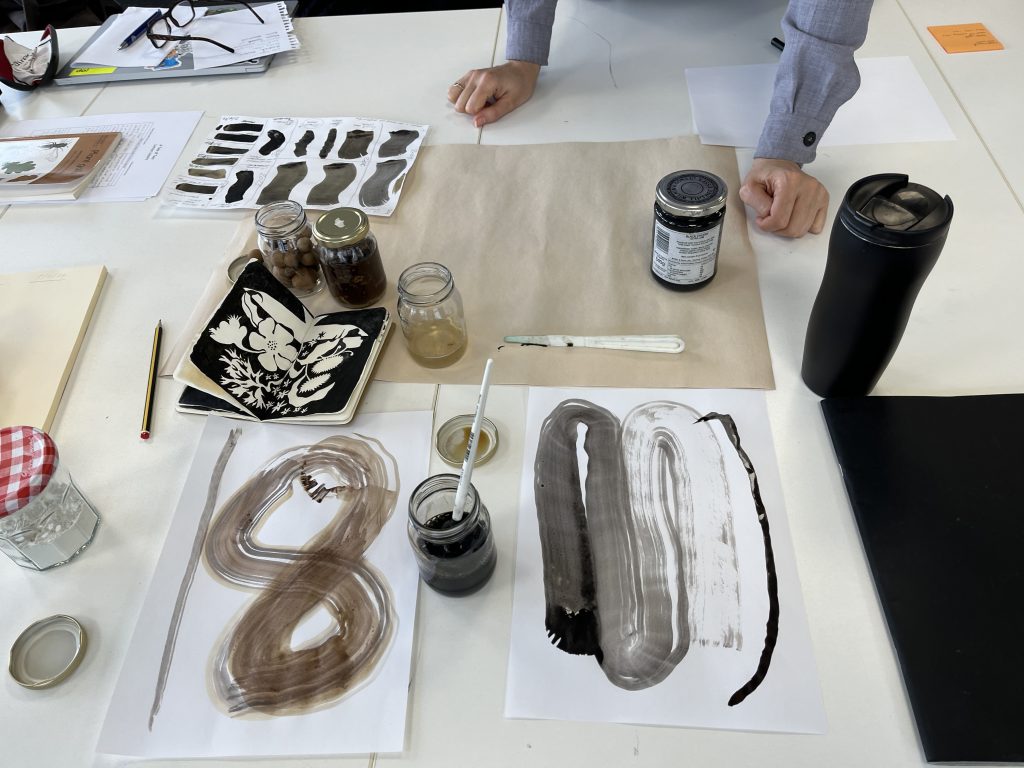
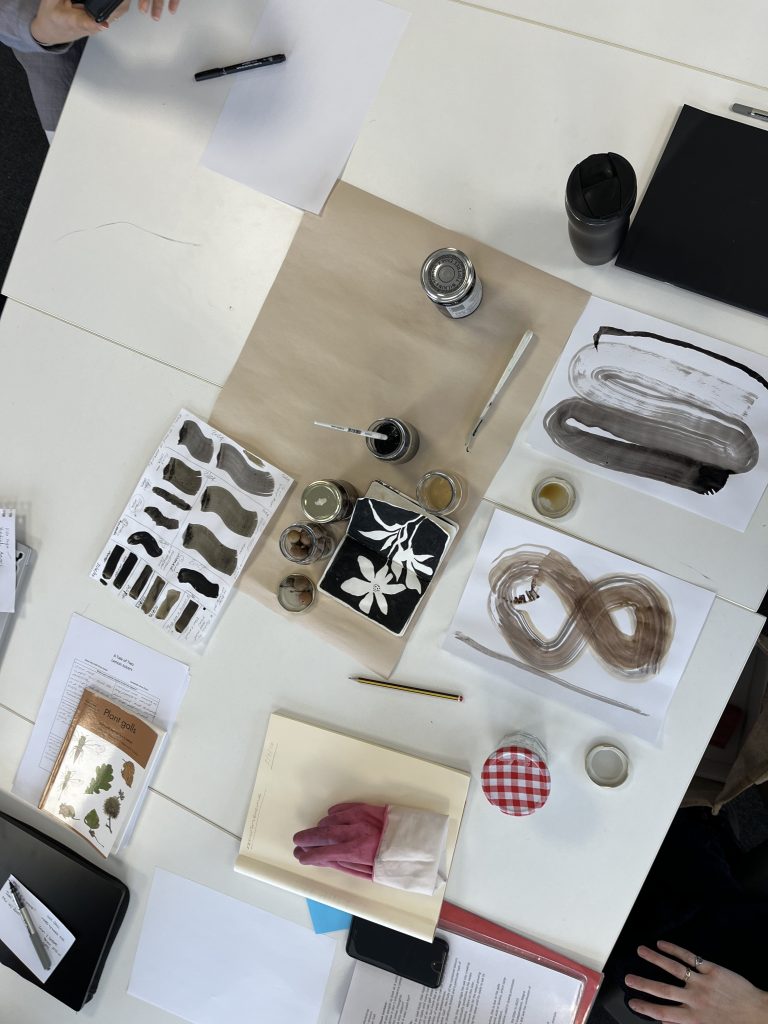


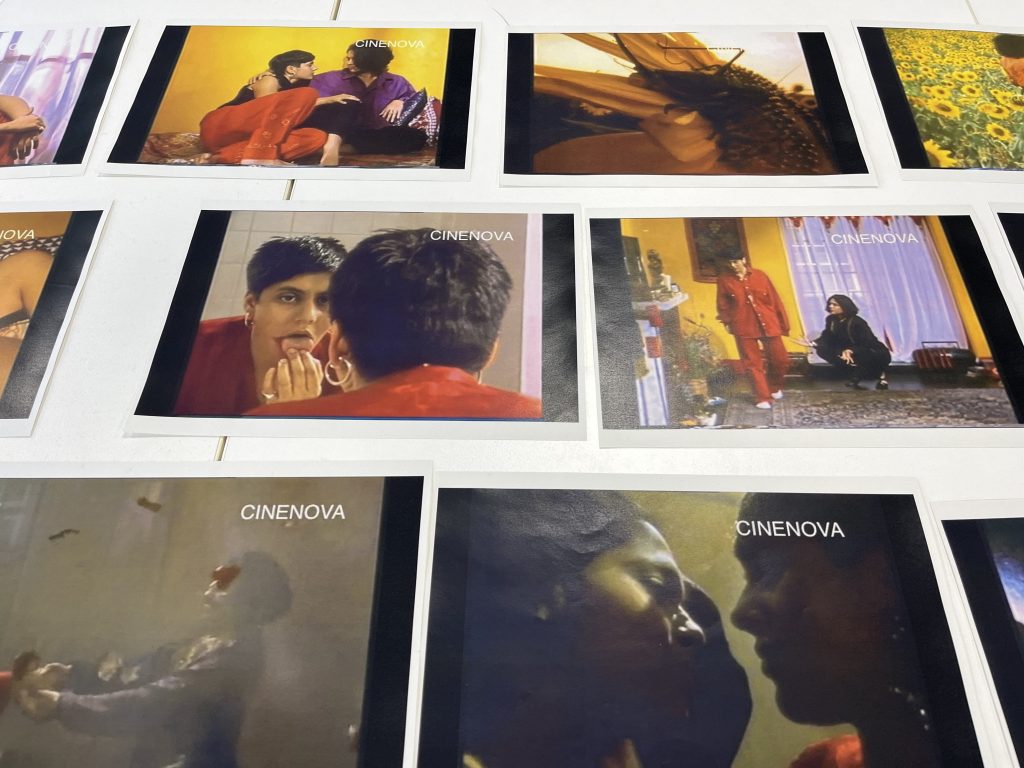
I found the variety of topics and approaches covered during the microteaching session to be inspiring and engaging. As shown in the accompanying images, we all chose a wide variety of topics, media, and material to present. A colour study of film became a modular narrative of printed stills. Aesthetic analyses of function vs. style were embodied and handled in the form of kitchen appliances. A memory palace representing multicultural identity expanded into a physical map and timeline. The complex challenge of thinking and creating ecologically became a hands-on painting experiment using wasp galls from oak trees. My senses were piqued and kept me highly engaged in the process of learning. As I mentioned in my reflection on reading “On the spectrum within art and design academic practice” (Damiani, 2018), multisensory experience has tremendous potential in the classroom for forming new neural connections and forming a lasting impression of information. I can still smell the imagined citrus extracted by the juicers when I look at the above kitchen appliances.
For my activity, “Resonant Futures: Object based listening”, I chose to introduce the concept of speculative design and imagined futures in the form of soundscape I recorded around Elephant & Castle. My hope was to subvert expectations around the visual experience of our surroundings by introducing the material relationships of the urban environment through a non-ocular medium. There seemed to be genuine enthusiasm for this approach, and I utilised an adapted version of the Wilcocks questionnaire (2014) to tether the experience to something less abstract. I underestimated how quickly the allotted twenty minutes would pass, which limited the planned discussion and tie-ins in the end. This is something I would adjust if given the opportunity to plan and present this again.
Applied context for my teaching practice
A unique challenge when teaching with and about data is to identify ways to make an inherently abstract topic more relatable and tangible. This typically involves presenting slides of “concrete” examples of potential outcomes and emphasising the importance of exploring/understanding emotions as they relate to the data and topic. I feel like object-based learning has provided a mini eureka moment for me. The object-based learning framework developed by Judy Wilcocks (2014) has been helpful guidepost that I am already weaving into my activities. For example, for an upcoming visit to the Wellcome Collection, I have created an online form version of the Wilcocks methodology (2014) for each student to use as both a guide for engagement and an active-learning, reflective assignment. The hope here is that “the element of intrigue generated by an exhibit adds to the object’s appeal and encourages students’ investigation and critical analysis of design” (Hardie, 2015). This should enrich their experience and help provide context for their next project assignment that will see them transform personal data into an engaging visual story and experience.
References
Damiani, L.M. (2018) ‘On the spectrum within art and design academic practice’, 3(1), pp. 16–25.
Hardie, K. (2015) ‘Innovative pedagogies series: Wow: The power of objects in object-based learning and teaching’, Higher Education Academy, pp. 1-25.
Wilcocks, J. (2014) ‘How to read an object’. Central Saint Martins.